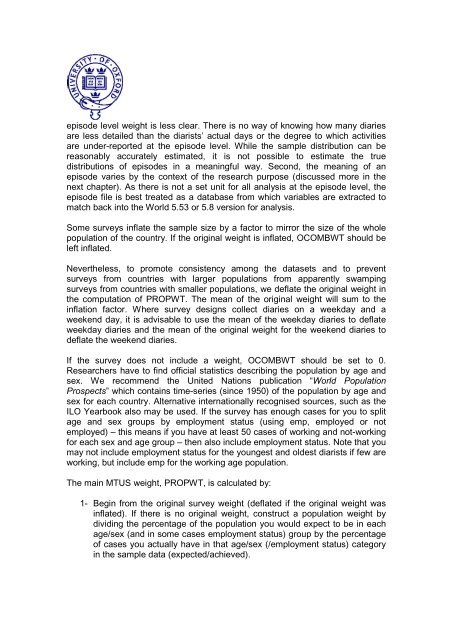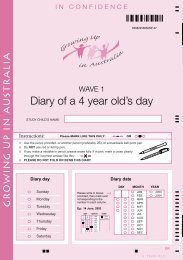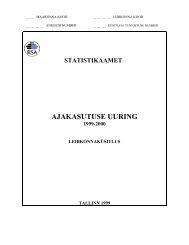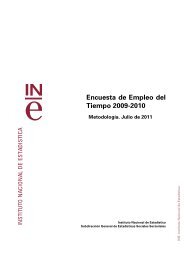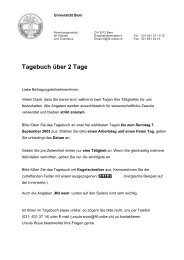multinational time use study user's guide and documentation
multinational time use study user's guide and documentation
multinational time use study user's guide and documentation
- No tags were found...
You also want an ePaper? Increase the reach of your titles
YUMPU automatically turns print PDFs into web optimized ePapers that Google loves.
episode level weight is less clear. There is no way of knowing how many diariesare less detailed than the diarists’ actual days or the degree to which activitiesare under-reported at the episode level. While the sample distribution can bereasonably accurately estimated, it is not possible to estimate the truedistributions of episodes in a meaningful way. Second, the meaning of anepisode varies by the context of the research purpose (discussed more in thenext chapter). As there is not a set unit for all analysis at the episode level, theepisode file is best treated as a database from which variables are extracted tomatch back into the World 5.53 or 5.8 version for analysis.Some surveys inflate the sample size by a factor to mirror the size of the wholepopulation of the country. If the original weight is inflated, OCOMBWT should beleft inflated.Nevertheless, to promote consistency among the datasets <strong>and</strong> to preventsurveys from countries with larger populations from apparently swampingsurveys from countries with smaller populations, we deflate the original weight inthe computation of PROPWT. The mean of the original weight will sum to theinflation factor. Where survey designs collect diaries on a weekday <strong>and</strong> aweekend day, it is advisable to <strong>use</strong> the mean of the weekday diaries to deflateweekday diaries <strong>and</strong> the mean of the original weight for the weekend diaries todeflate the weekend diaries.If the survey does not include a weight, OCOMBWT should be set to 0.Researchers have to find official statistics describing the population by age <strong>and</strong>sex. We recommend the United Nations publication “World PopulationProspects” which contains <strong>time</strong>-series (since 1950) of the population by age <strong>and</strong>sex for each country. Alternative internationally recognised sources, such as theILO Yearbook also may be <strong>use</strong>d. If the survey has enough cases for you to splitage <strong>and</strong> sex groups by employment status (using emp, employed or notemployed) – this means if you have at least 50 cases of working <strong>and</strong> not-workingfor each sex <strong>and</strong> age group – then also include employment status. Note that youmay not include employment status for the youngest <strong>and</strong> oldest diarists if few areworking, but include emp for the working age population.The main MTUS weight, PROPWT, is calculated by:1- Begin from the original survey weight (deflated if the original weight wasinflated). If there is no original weight, construct a population weight bydividing the percentage of the population you would expect to be in eachage/sex (<strong>and</strong> in some cases employment status) group by the percentageof cases you actually have in that age/sex (/employment status) categoryin the sample data (expected/achieved).


